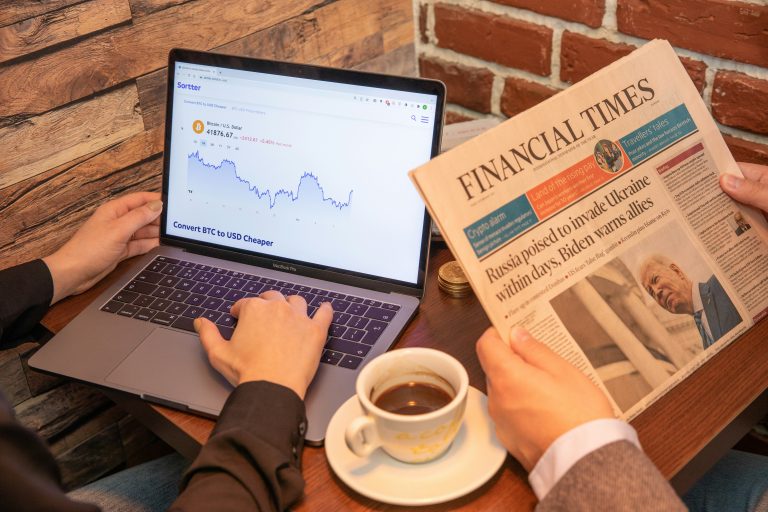The global financial environment in 2025 is anything but quiet. From unexpected central bank decisions to currency shocks, equity volatility, and commodity pressures, the financial world remains in a constant state of transformation. For investors and traders alike, keeping pace with financial news is no longer optional—it’s essential for survival and growth in an increasingly data-driven marketplace.
Central Banks and the Battle Against Inflation
One of the central narratives of this year continues to revolve around monetary policy. After years of aggressive rate hikes aimed at curbing inflation, several central banks are now facing a more nuanced dilemma: how to stimulate growth without reigniting price pressures. The U.S. Federal Reserve, the European Central Bank, and others have started to diverge in their approaches, creating ripple effects across currencies, bonds, and global equity indices.
Markets are quick to respond. A single comment from a central banker—whether interpreted as dovish or hawkish—can shift expectations for interest rates and drive asset prices in unexpected directions. In this environment, investors must remain nimble and attentive to every data release and policy update, as the tone of global monetary coordination continues to fragment.
Equity Markets Dance to the Tune of Uncertainty
Stock markets across the world are experiencing irregular patterns. Tech-heavy indices that soared during the early 2020s have encountered profit-taking and rotation into more defensive sectors, while energy and manufacturing stocks respond to macro data, geopolitical developments, and shifts in commodity prices.
Sentiment is highly reactive. Quarterly earnings, forward guidance, and even corporate restructurings can send entire sectors upward or downward within hours. Volatility, while less extreme than in pandemic years, remains elevated—especially around key announcements or political turning points.
Institutional investors, meanwhile, are recalibrating. Many are hedging against potential downturns, while others are searching for opportunities in undervalued sectors or emerging markets. Retail traders, supported by advanced platforms and real-time access to news, are increasingly influencing short-term movements with rapid responses to headlines and social sentiment.
Commodities: Oil, Gold, and the Energy Puzzle
Crude oil prices are fluctuating as global demand forecasts shift and producers recalibrate output in response to economic signals and geopolitical risks. At the same time, gold remains a barometer of investor caution, often rising in times of uncertainty or when inflation fears resurface.
Energy markets, in particular, are under the microscope. With the global transition to cleaner sources still underway, fossil fuel markets are caught in a tug-of-war between legacy demand and future policy constraints. Prices in this sector remain highly sensitive to both fundamental data and speculative trading flows, making it an attractive—but risky—area for traders.
Currencies and Capital Flows: The Pulse of Global Money
The currency market reflects deep undercurrents in global finance. This year has seen sharp movements in major pairs, with the euro, dollar, yen, and pound all affected by diverging growth rates, inflation data, and political sentiment.
Capital flows are adjusting accordingly. Investors are seeking yield where real interest rates are higher, while safe-haven assets gain appeal when uncertainty rises. Currency volatility also affects multinational companies, emerging markets, and central bank strategies, reinforcing its central role in financial dynamics.
Why Learning Trading Terms Matters More Than Ever
In a world where financial news can shift entire markets within minutes, understanding the language of trading is not just useful—it’s critical. Trading terms are crucial to enter intuitivelly in this world. Markets don’t just move; they speak. Every chart, every shift in price, every surge or stall is a form of communication—and like any language, it requires fluency to be understood.
There’s a layer beneath the headlines and ticker symbols where rhythm and structure matter. Patterns form, signals emerge, and decisions hinge not on guesswork but on the ability to read the moment clearly. This isn’t about memorizing jargon—it’s about developing the tools to recognize when a move is building, when pressure is easing, when caution matters more than speed.
Without that literacy, markets become noise. You miss the turning points. You react instead of anticipating. Risk becomes harder to measure, and opportunity, easier to overlook.
Whether you trade daily or invest with a years-long horizon, understanding how the market thinks—its tempo, its tension, its tells—is what turns uncertainty into strategy.
The news will always move fast. But those who’ve learned to interpret the deeper current beneath the surface don’t just keep up—they position themselves ahead of the wave.


